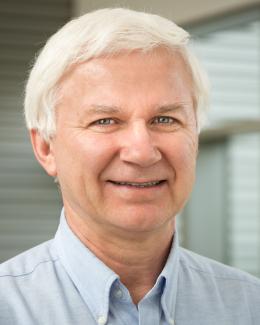Abstract
The properties of fluids can be significantly altered by the geometry of their confining environments. While there has been significant work on the properties of such confined fluids, the properties of fluids under ultraconfinement, environments where, at least in one plane, the dimensions of the confining environment are similar to that of the confined molecule, have not been investigated. This paper investigates the dynamic properties of water in beryl (Be3Al2Si6O18), the structure of which contains approximately 5-A-diam channels parallel to the c axis. Three techniques, inelastic neutron scattering, quasielastic neutron scattering, and dielectric spectroscopy, have been used to quantify these properties over a dynamic range covering approximately 16 orders of magnitude. Because beryl can be obtained in large single crystals we were able to quantify directional variations, perpendicular and parallel to the channel directions, in the dynamics of the confined fluid. These are significantly anisotropic and, somewhat counterintuitively, show that vibrations parallel to the c-axis channels are significantly more hindered than those perpendicular to the channels. The effective potential for vibrations in the c direction is harder than the potential in directions perpendicular to it. There is evidence of single-file diffusion of water molecules along the channels at higher temperatures, but below 150 K this diffusion is strongly suppressed. No such suppression, however, has been observed in the channel-perpendicular direction. Inelastic neutron scattering spectra include an intramolecular stretching O-H peak at ∼465 meV. As this is nearly coincident with that known for free water molecules and approximately 30 meV higher than that in liquid water or ice, this suggests that there is no hydrogen bonding constraining vibrations between the channel water and the beryl structure. However, dielectric spectroscopic measurements at higher temperatures and lower frequencies yield an activation energy for the dipole reorientation of 16.4 ± 0.14 kJ/mol, close to the energy required to break a hydrogen bond in bulk water. This may suggest the presence of some other form of bonding between the water molecules and the structure, but the resolution of the apparent contradiction between the inelastic neutron and dielectric spectroscopic results remains uncertain.




